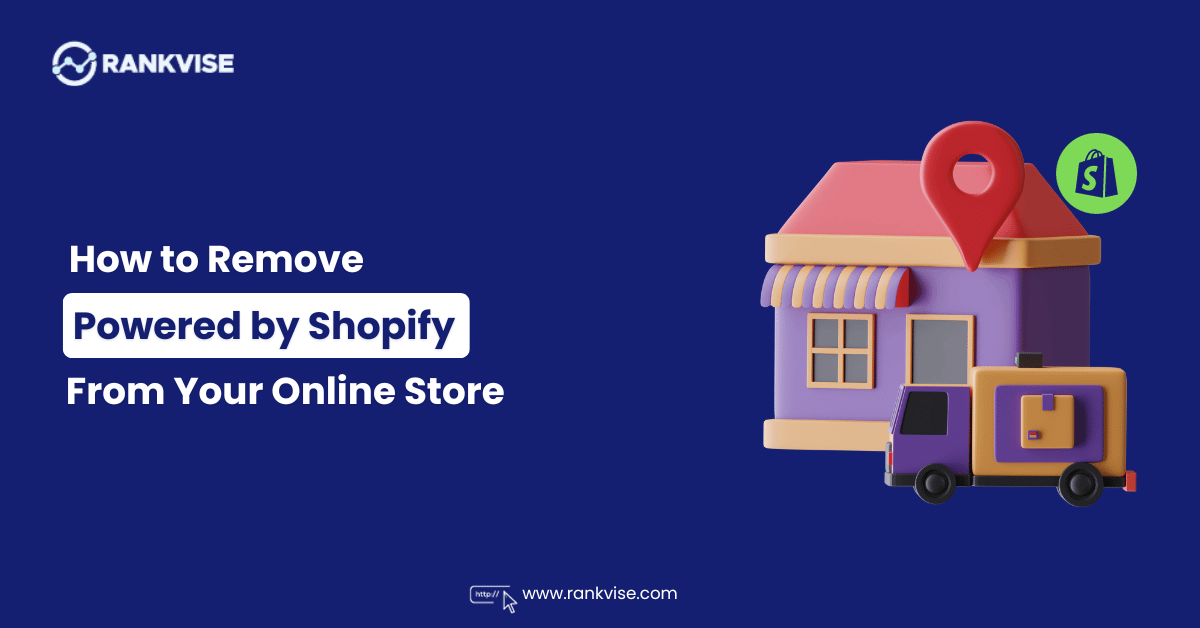In the fiercely competitive online marketplace, converting visitors into customers is the key to success. In fact, according to ecommerce conversion rate statistics, only 2-3% website visitors convert into paying customers. That’s why we’ve gathered invaluable eCommerce Conversion Rate Optimization (CRO) tips to supercharge your sales and transform your online store into a thriving revenue-generating machine.
In this blog, we’ll delve into the intricacies of eCommerce CRO – from understanding user behaviour to optimizing your website for maximum conversions. Whether you’re a seasoned eCommerce veteran or just starting out, these tips will provide actionable insights to boost your conversion rates, drive more sales, and foster long-term customer relationships.
Are you ready to revolutionize your eCommerce strategy? Let’s dive into the world of eCommerce CRO and elevate your online business to unprecedented heights.
What is Average eCommerce Conversion Rate Benchmarks?
A good eCommerce conversion rate can vary depending on various factors, including industry, product type, target audience, and the effectiveness of your website and marketing strategies. However, as a general benchmark, a good eCommerce conversion rate typically falls within the range of 2% to 5%. This means that for every 100 visitors to your eCommerce site, you would expect 2 to 5 of them to make a purchase.
However, it’s important to note that what constitutes a “good” conversion rate can vary based on your specific goals and circumstances. Factors like the quality of traffic, the stage of your business, and your industry norms play crucial roles in determining what’s considered a favourable conversion rate for your eCommerce business. The key is to continually analyse your data, conduct A/B testing, and strive to improve your conversion rate over time.
Boost Sales: Top eCommerce Conversion Rate Improvement Tips
1. Countdown Discount Popup
Countdown discount popups create urgency, urging visitors to swiftly avail limited-time offers, thus enhancing conversions and reducing cart abandonment. These visually engaging elements effectively drive sales by capitalizing on the fear of missing out (FOMO) and capturing immediate attention.
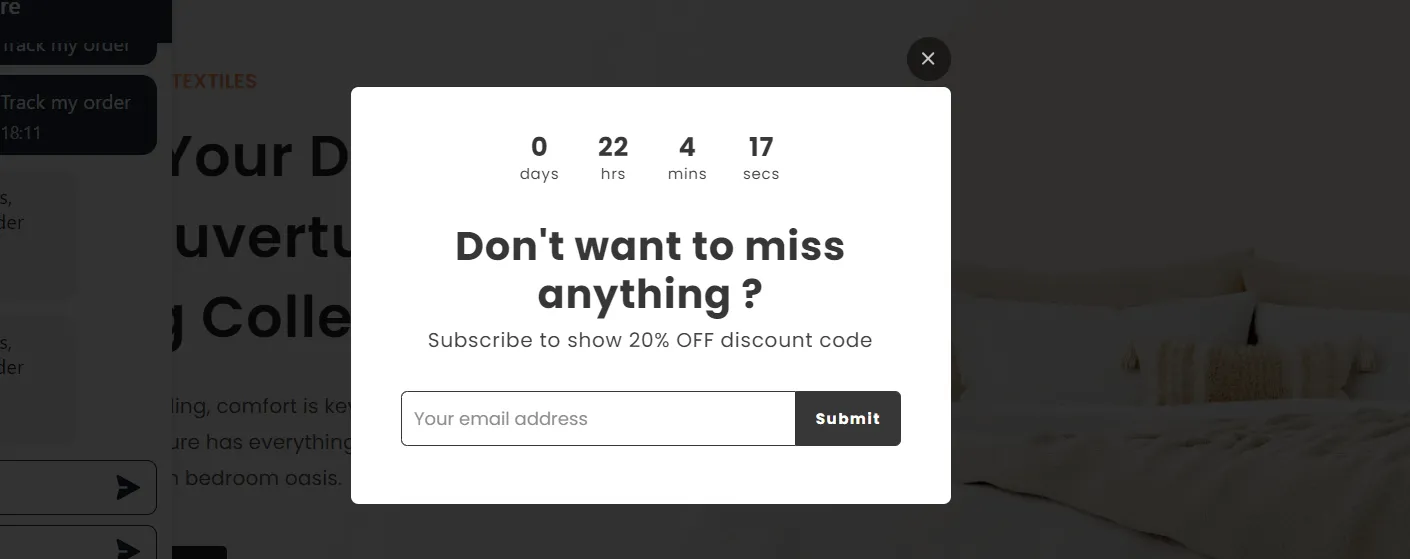
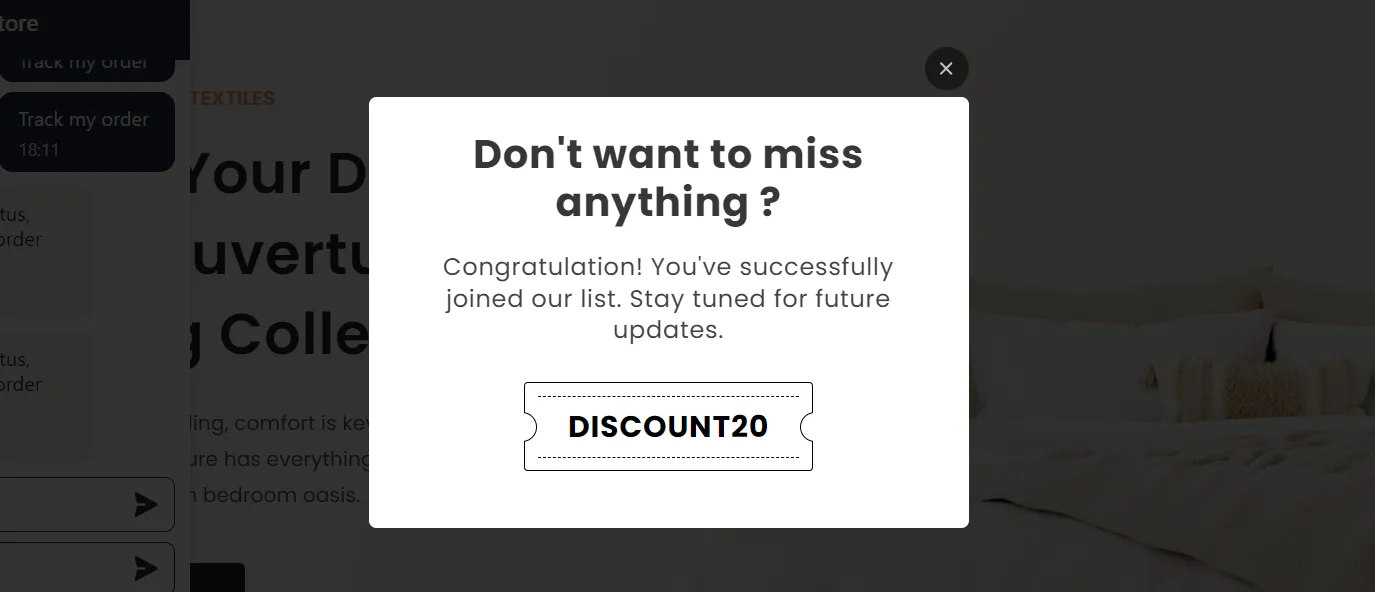
2. Header Countdown
Utilize a header countdown on your Shopify store to create urgency, motivating customers to make a purchase before the timer expires. Pair it with a limited-time offer to drive sales and boost conversions, effectively leveraging time-sensitive incentives for increased customer engagement and transactions.

3. Cart Countdown
Show a countdown timer on the cart to push customers to check out quickly. Displaying a countdown timer on the cart prompts customers to complete their purchase swiftly, creating a sense of urgency and reducing cart abandonment rates. This real-time reminder encourages immediate action, enhancing the overall shopping experience and driving revenue.

4. Checkout Count
Show recently purchased orders to build trust and FOMO (fear of missing out). By demonstrating product popularity, instilling confidence in potential customers and prompting them to make a purchase to avoid missing out on trending items, resulting in increased sales and a sense of urgency.
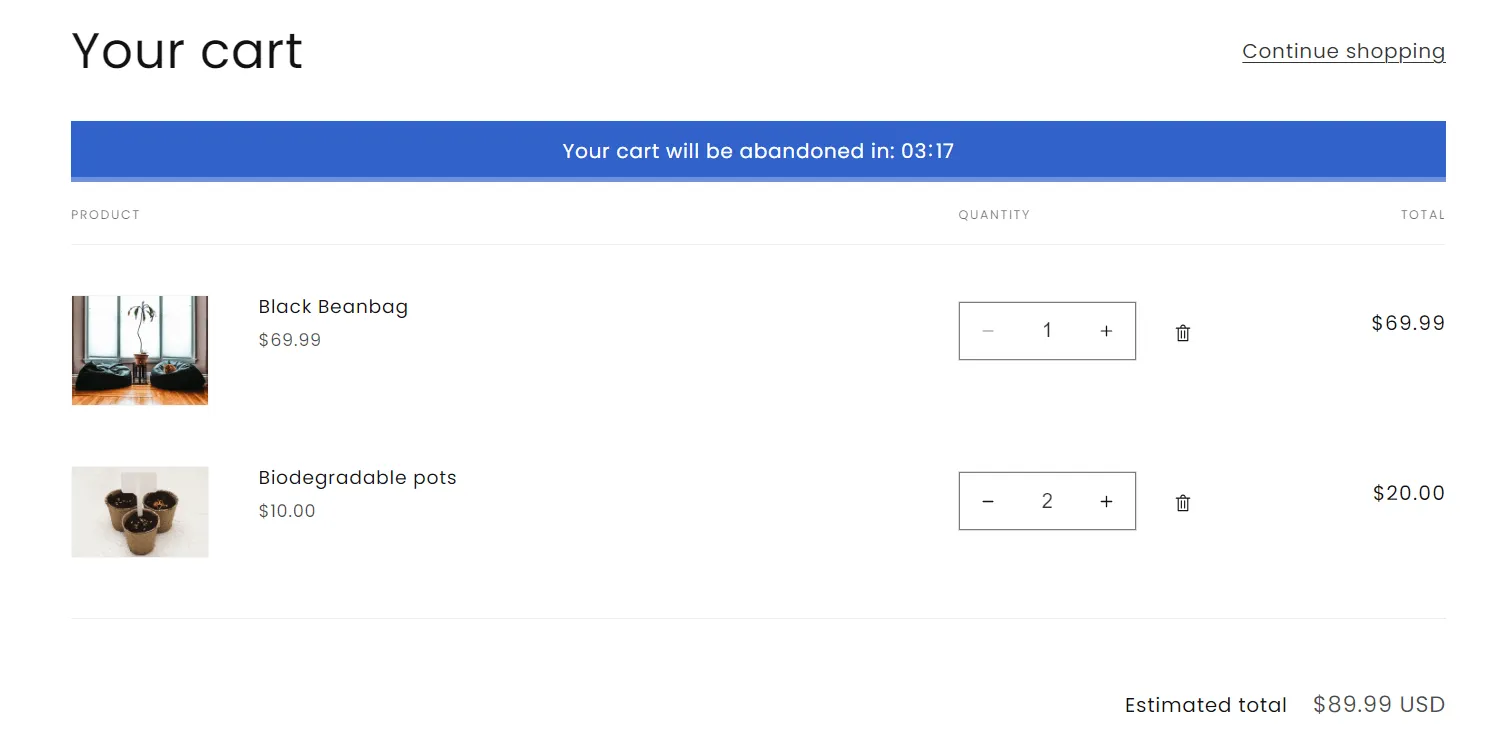
5. Sold Count
Sold count popups showcase product popularity, creating a sense of demand and urgency. By displaying the number of items sold, they enhance credibility and encourage potential customers to make a purchase, ultimately boosting conversion rates and instilling confidence in the product’s appeal.
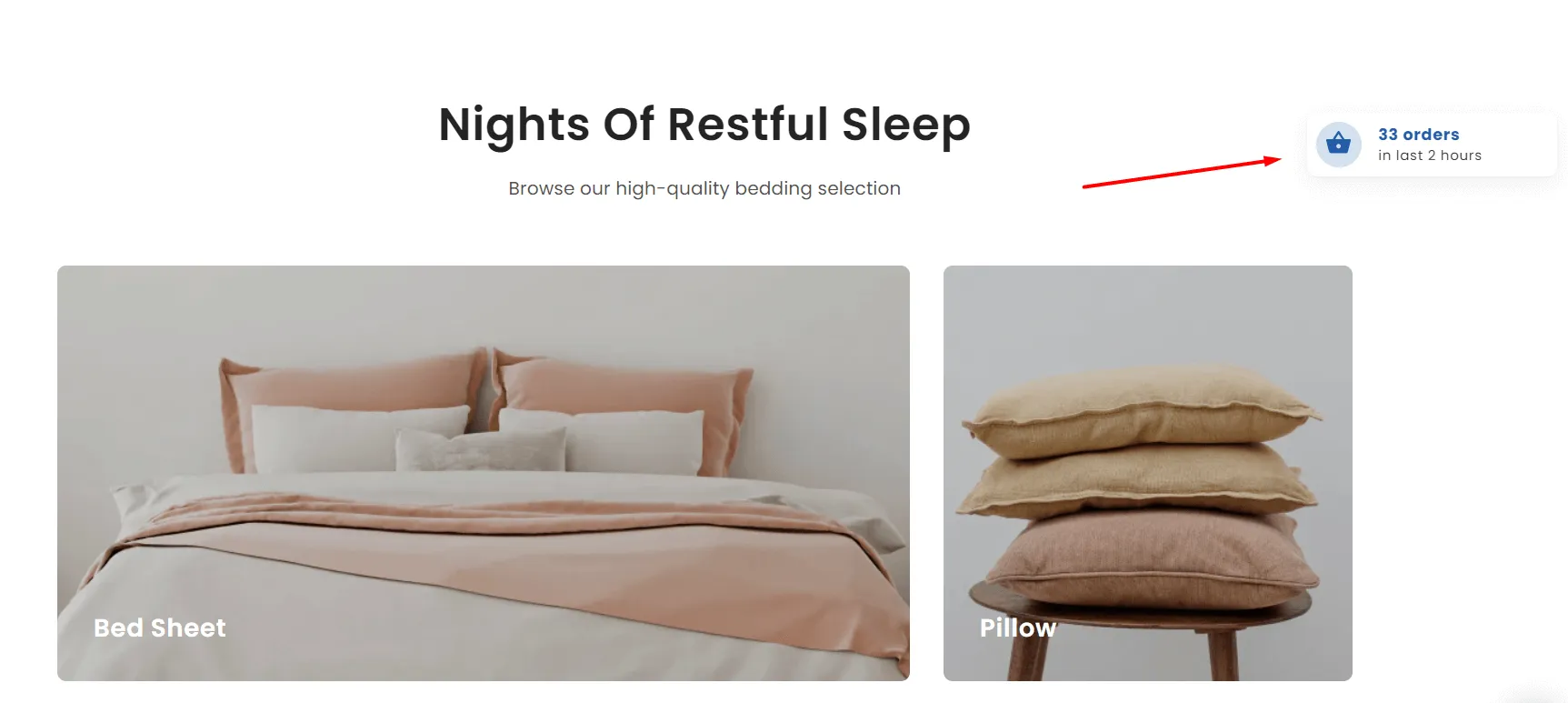
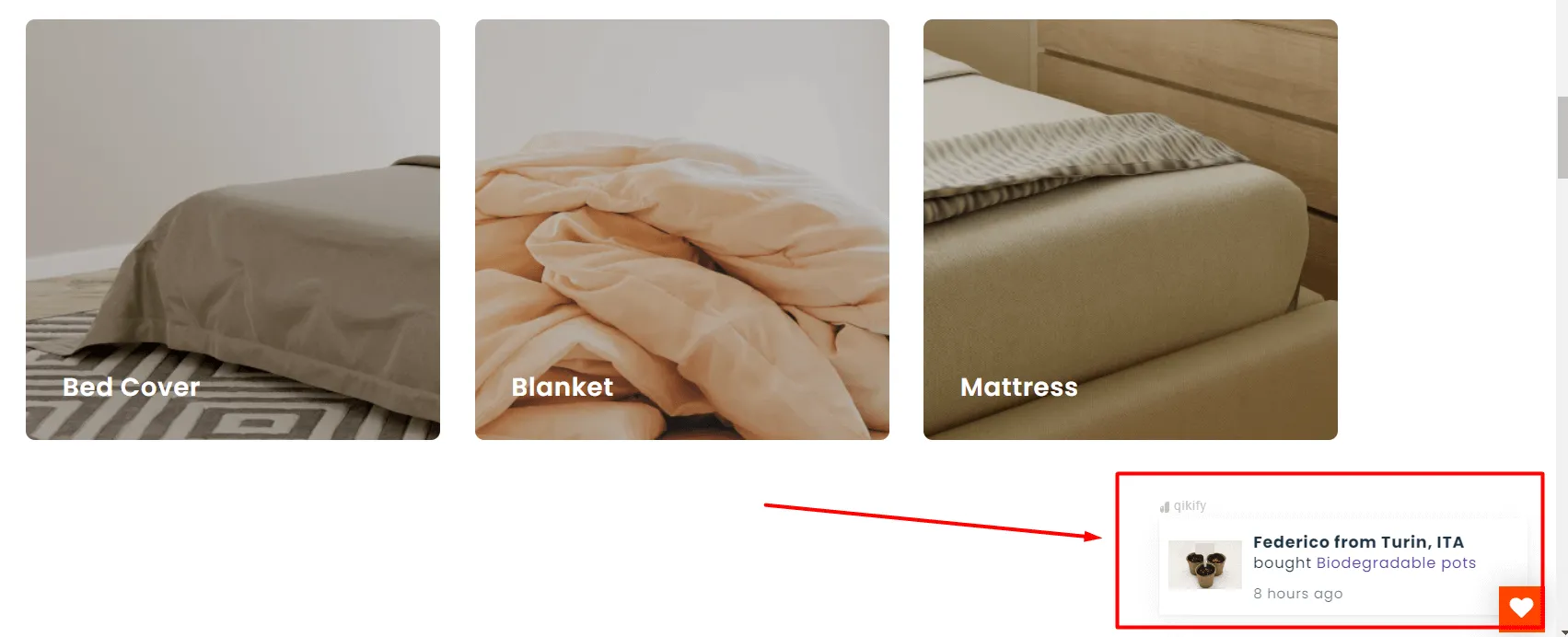
6. Chat Support + Track Order
Integrating a chat support feature allows real-time assistance, resolving customer queries promptly and boosting their confidence in purchasing. Simultaneously, a track order widget enhances transparency and reduces anxiety by providing insights into the order status. Together, these elements improve user experience, establish trust, and positively impact conversion rates by streamlining the buying process and ensuring customer satisfaction.

7. Add trust signals to your online store
New customers often find it difficult to trust unfamiliar websites. Prove your online store can be trusted with sensitive information—and increase sales—by displaying trust signals like:
- Money-back guarantees
- Customer reviews
- Return/refund policies
- SSL certificates
- Logos of credit card processors
Example 1
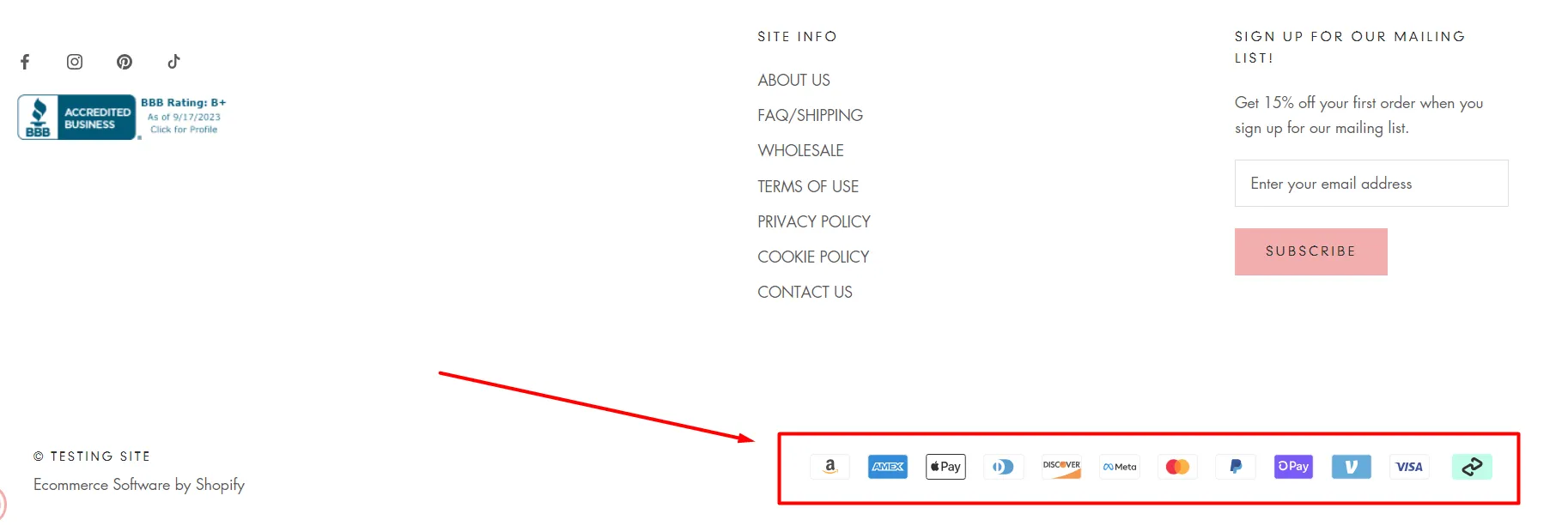
Example 2
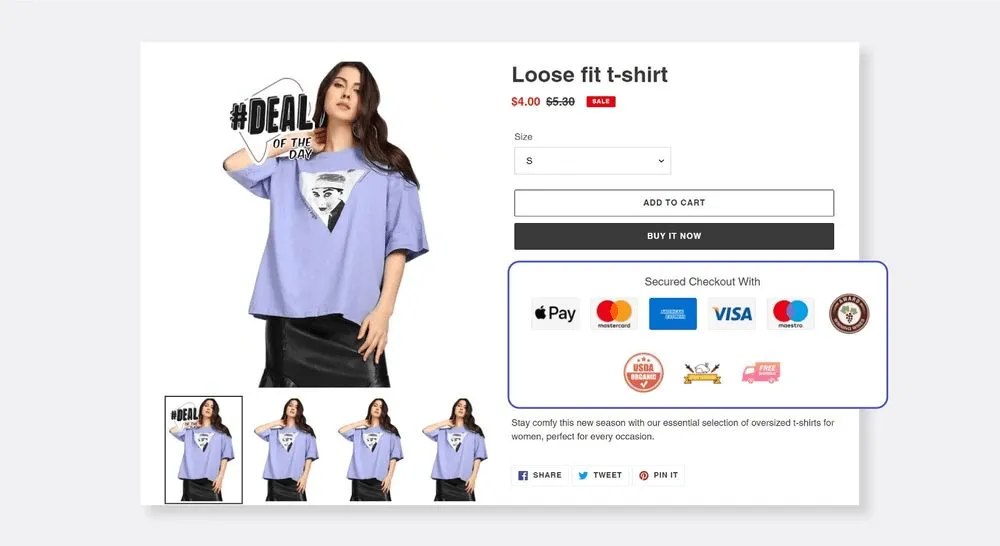
Example 3
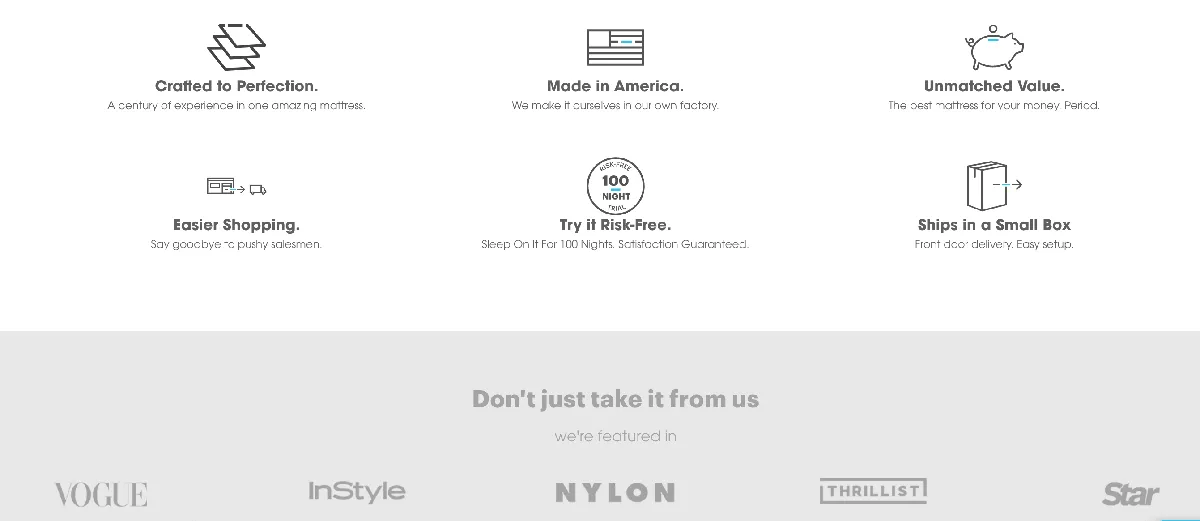
Example 4
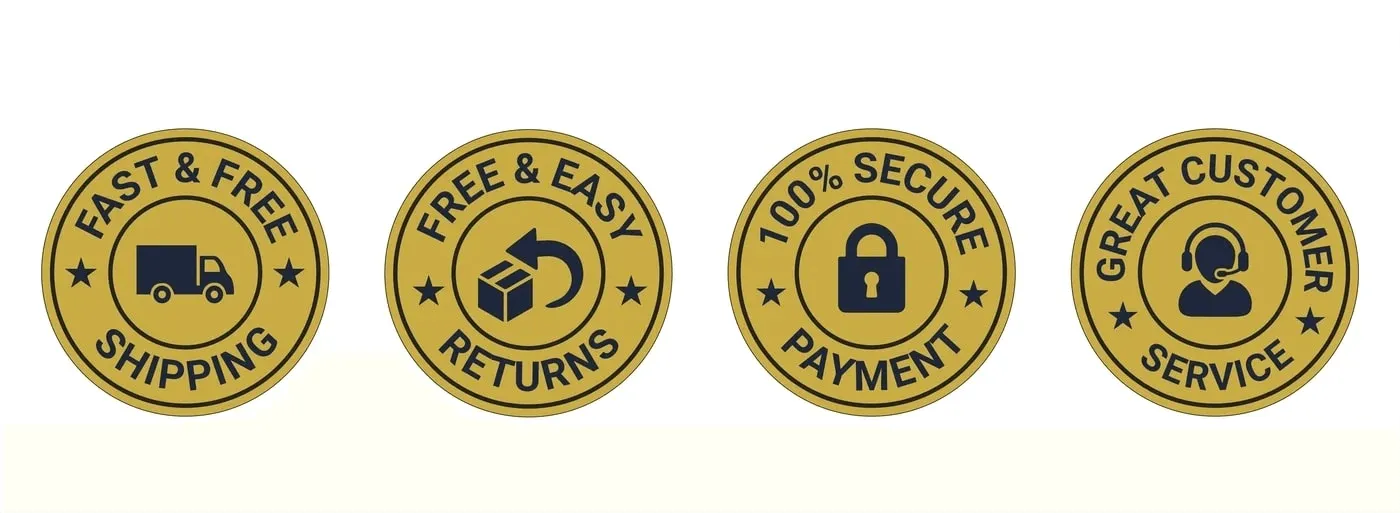
8. Improve Website Navigation
Optimizing website navigation streamlines user journeys, making it easier for visitors to find desired products or information swiftly. Clear and intuitive navigation reduces frustration, enhances user satisfaction, and ultimately increases conversions by creating a seamless and efficient browsing experience. When customers can easily navigate and locate what they need, they’re more likely to complete purchases and become repeat buyers.

9. Run Email Automations
Leveraging email automations allows timely and personalized communication with customers, nurturing relationships and encouraging repeat purchases. Tailored emails showcasing relevant products, discounts, or reminders drive engagement, effectively boosting conversion rates. Automation ensures consistent outreach, re-engages potential buyers, and fosters brand loyalty, making it a powerful tool to optimize eCommerce conversion rates and maximize revenue.
- Abandoned checkout : Drive customers back to your store to complete their checkout.
- Abandoned cart : Remind customers they left items in their shopping cart.
- Abandoned product browse : Engage customers who viewed a product page but didn’t add anything to their cart.
Use cart abandonment emails to remind people who added an item to their basket but didn’t buy. Give them a reason to buy now (like an additional discount), rather than later.
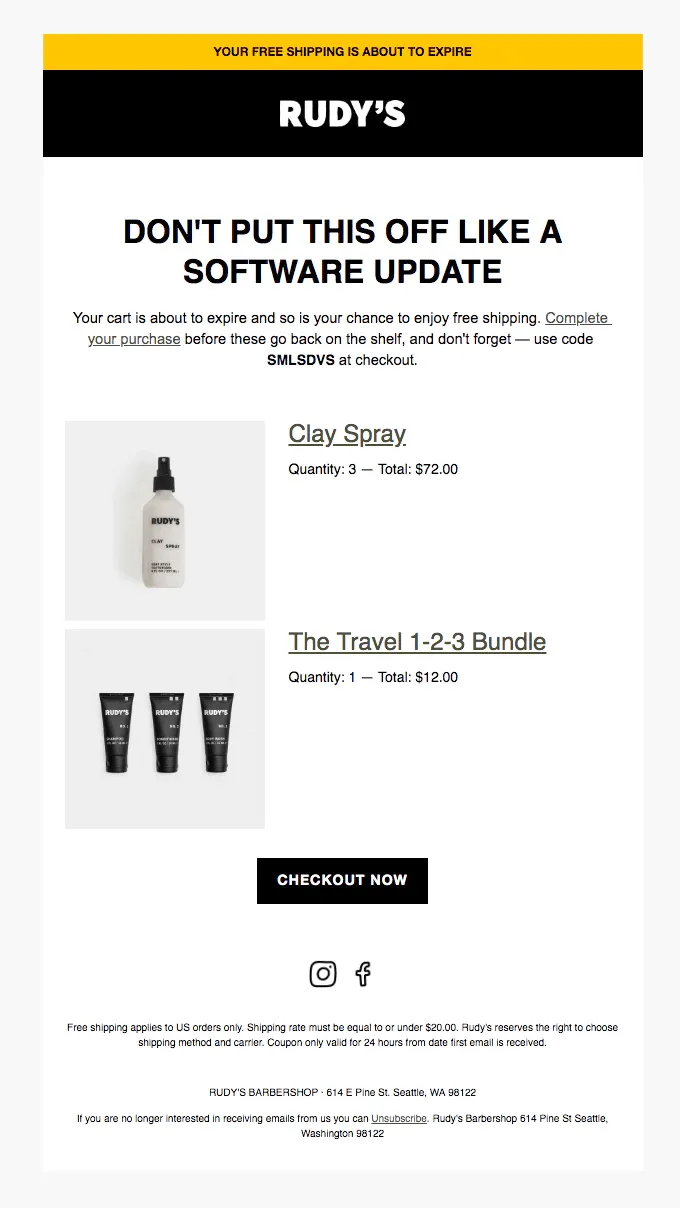
10. Speed up the Checkout Process
Streamlining the checkout process by minimizing steps and reducing loading times vastly improves user experience. A quick, hassle-free checkout eliminates potential friction points, reducing cart abandonment rates and increasing conversion rates. Simplifying the process, optimizing form fields, and integrating secure payment gateways create a seamless transaction experience, ultimately boosting eCommerce conversion rate optimization and driving higher sales. Its checkout to conversion rate is 1.72 times higher than standard checkout.
Example 1:

Example 2:
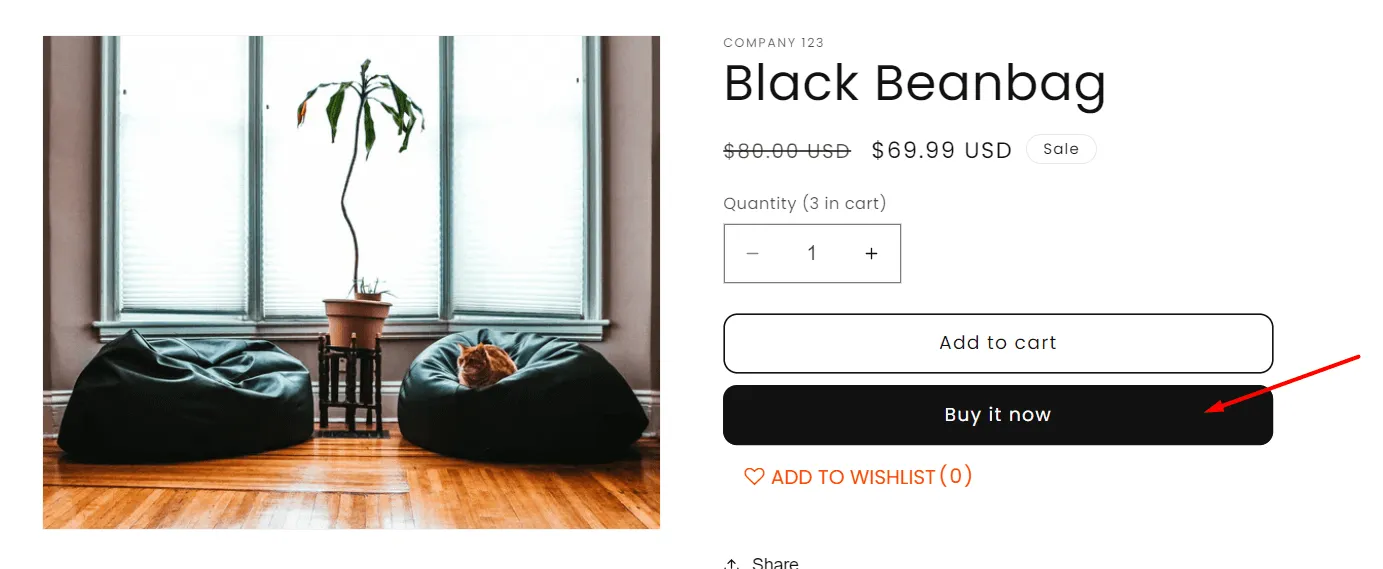
11. Use upsells and cross-sells
Implementing strategic upsells and cross-sells presents additional value to customers, driving increased average order value and enhancing revenue. By showcasing relevant products during the buying process, customers are enticed to add more to their cart. This tactic not only optimizes sales but also improves the overall shopping experience, making it a potent tool for eCommerce conversion rate optimization.
- Upsells: Product recommendations that are more expensive than the one they’re currently browsing.
- Cross-sells: Product recommendations that complement what an existing website visitor already has in their shopping cart.
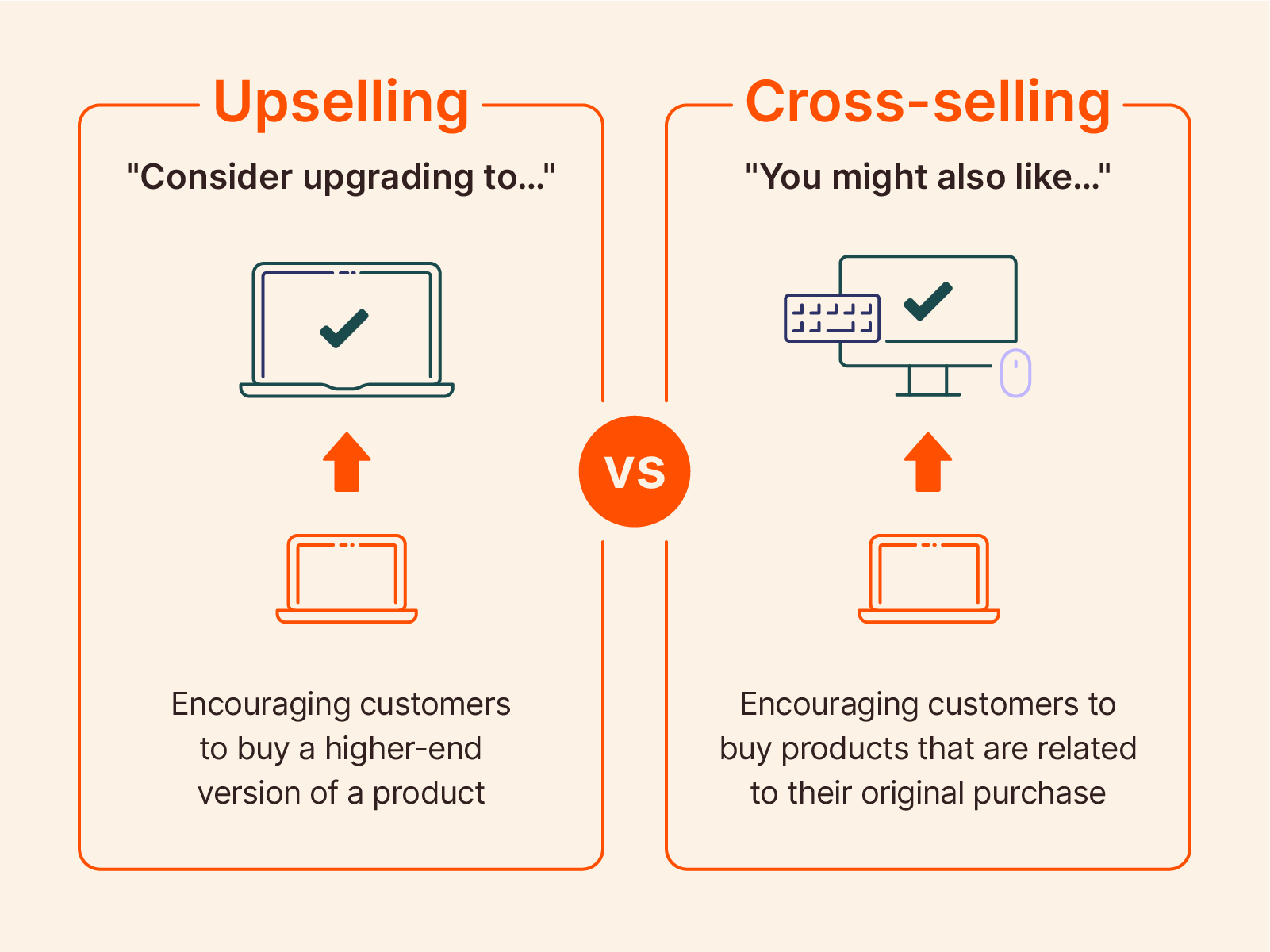
Example: If someone is browsing a $19 iPhone 14 phone case, for example, upsell and recommend a $39 one with drop protection. Cross-sell and increase average order value with a matching $4.99 PopSocket.
12. Push Notification
Push notifications use browser cookies to store user preferences and deliver timely updates, enabling websites to engage visitors even when they’re not actively browsing, enhancing user experience and boosting re-engagement strategies.
Implement push notifications to reach customers without requiring their email or phone number, instantly delivering important updates, promotions, or news, thus increasing customer engagement and driving sales by fostering a direct communication channel.
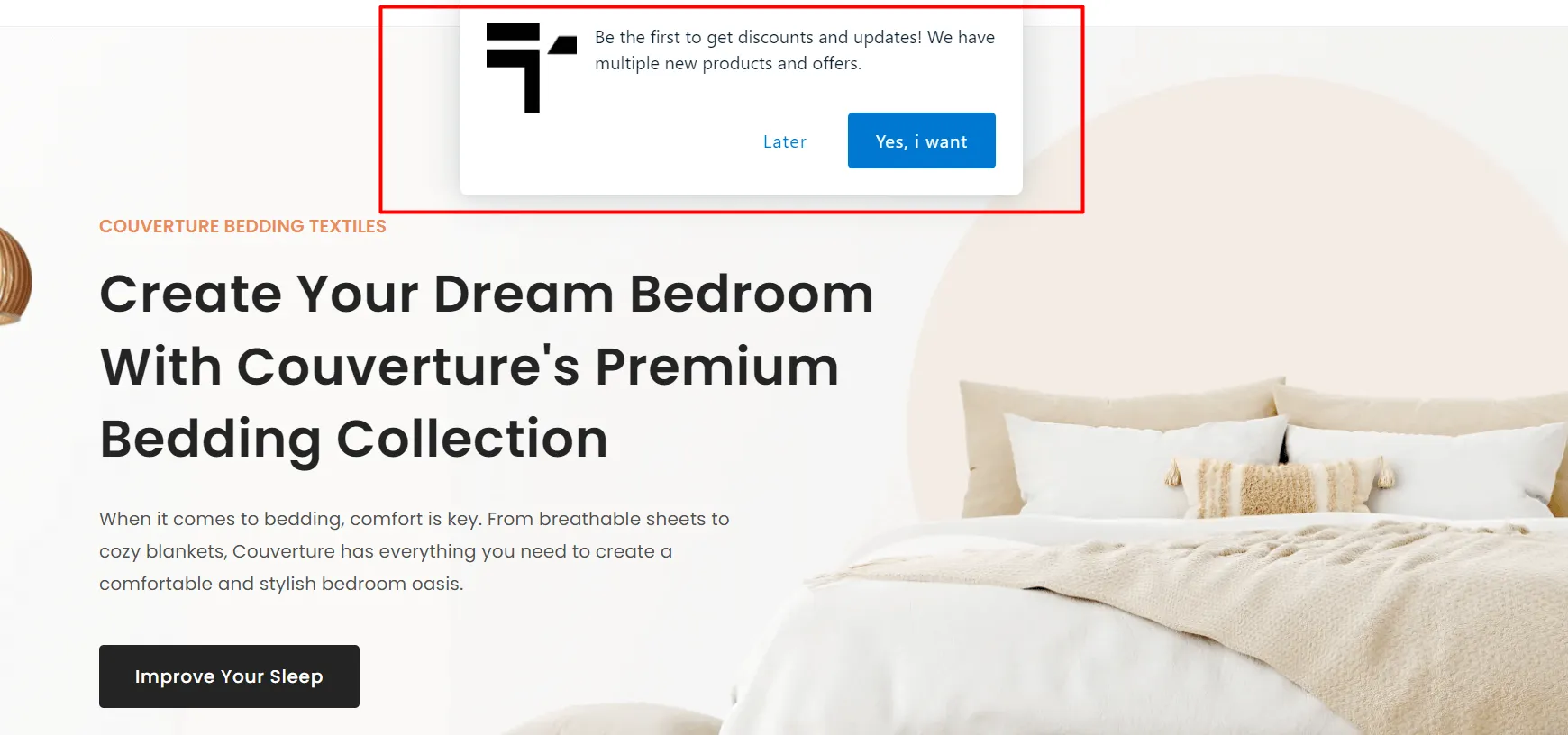
Conclusion
With the invaluable tips we’ve explored here at Rankvise, you now possess the knowledge to optimize your eCommerce platform, increase sales, and foster lasting customer relationships.
Remember, the key lies in understanding your audience, optimizing the user experience, and utilizing effective strategies such as countdown discounts, sold count popups, and streamlined website navigation. By implementing these techniques and continuously fine-tuning your approach, you’ll propel your eCommerce business to new heights of profitability and customer satisfaction.
Stay innovative, stay customer-centric, and watch as your eCommerce venture flourishes. Thank you for joining us on this insightful journey toward eCommerce success.
FAQs
eCommerce Conversion Rate Optimization (CRO) is the process of optimizing a website or online store to increase the percentage of visitors who complete a desired action, such as making a purchase, signing up, or filling out a form.
CRO is vital for eCommerce as it enhances user experience, boosts sales, and maximizes the return on marketing efforts. By optimizing the website to encourage desired actions, businesses can increase revenue without necessarily attracting more visitors.
eCommerce conversion rates are calculated by dividing the number of conversions (e.g., purchases) by the total number of visitors to your site and then multiplying by 100 to get a percentage. The formula is: (Conversions / Total Visitors) * 100.
Common CRO techniques for eCommerce include A/B testing, improving website speed, enhancing product descriptions and images, optimizing checkout process, implementing clear CTAs, utilizing customer reviews, and offering incentives like discounts.
Optimize product pages by using high-quality images, compelling product descriptions, clear pricing, prominent CTAs, customer reviews, related product suggestions, and a streamlined checkout process.
Site speed significantly impacts conversion rates. A slow website can lead to higher bounce rates and cart abandonment. Faster loading times improve user experience and increase the likelihood of visitors completing a purchase.
Social proof, such as customer reviews, ratings, and testimonials, enhances credibility and trust. Displaying positive social proof on product pages can influence potential customers and boost conversion rates.
Email marketing can be utilized for CRO by sending personalized, targeted emails that drive traffic to specific product pages or promotions, nurturing leads, and encouraging previous visitors to complete a purchase with special offers or reminders.
The frequency of A/B tests can vary based on your website’s traffic and objectives. Generally, it’s advisable to conduct tests regularly, analyzing results and implementing changes accordingly to continuously optimize the conversion process.


